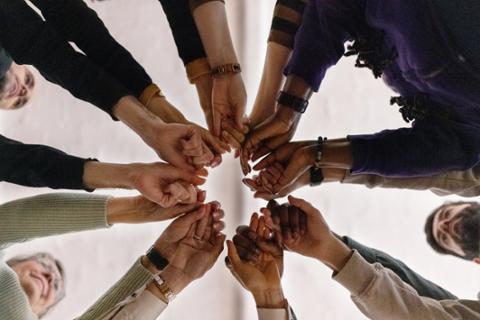
Unconscious bias has been a popular topic in the tech industry in recent years as companies seek ways to better understand and address their diversity issues. Also known as implicit bias, unconscious bias is a set of social stereotypes about certain groups of people that individuals form outside of their own conscious awareness. Tech companies such as
Google,
Facebook, Pinterest, Airbnb, and Slack have implemented unconscious bias training in recent years as part of efforts to boost diversity and inclusion. But despite their efforts, diversity figures within tech companies’ employee ranks remain dismal. Blacks and Latinos still make up less than
10 percent of the tech workforce, and women are around
25 percent. So what role does unconscious bias actually play in tech’s diversity problem? And how can companies make progress on this issue? Here are some pathways for better understanding unconscious bias and its impact on the tech industry.
It Can Drive Decisions
While most people don’t intentionally stereotype or discriminate against groups of people, their brains tend to make judgments based on patterns, experiences, and cultural stereotypes. The brain is wired to categorize things so it can make quick and efficient decisions. And sometimes stereotypes shape those categories. “Unconscious bias is our tendency to make mental shortcuts,” said Natalie Johnson, partner at Paradigm, a firm that helps companies with diversity and inclusion. “While these shortcuts are helpful—they enable us to make decisions quickly—they can be prone to error. They can especially be prone to error when making decisions about people.”
It Impacts Hiring and Promotions
Since unconscious bias affects individuals’ decisions about people, it can slip into the hiring process, which is why tech companies have tried to tackle it. “While people aren’t malicious, [by] saying things like, ‘I’m not going to hire that type of person,’ they are hiring people they have things in common with, people they know and that they have relationships with,” said Justin Jones-Fosu, an employee engagement speaker who facilitates diversity workshops. “What we tend to see is that people’s relationships tend to be very homogenous by nature. So companies tend to perpetuate the relationships that people already have, and you get one type of person that dominates the company.” Johnson said that many tech companies don’t have a consistent process for making hiring and promotion decisions. And where there’s no standard process, decisions tend to be less objective, and based on whether the interviewer likes the candidate or comes from a similar background, she said.
It Impacts Company Culture and Recruitment
Unconscious bias is not just an issue for hiring managers and executives, but all employees. It can create an office culture that dissuades people of underrepresented groups from speaking up; or when they do speak, they are interrupted. Consequently, it discourages diverse candidates from joining the company. “Not only does bias impact how companies evaluate people, but also who’s interested in joining a company,” Johnson said.
Training Isn’t Enough
While training and workshops have been the chosen method for combating the problem, the lack of substantive change in the industry has caused many to question its effectiveness. “I believe unconscious bias training has failed the tech industry as the single solution to the diversity inclusion problem and we need to go beyond training,” said Wayne Sutton, founder of the Change Catalyst and Tech Inclusion conferences. “If you look at the numbers, nothing has changed in most organizations, and some of them have gotten worse.” Sutton believes that, because training just recognizes the problem, more effective solutions are needed: “In an industry where everything moves so fast, why can’t the industry fix this?”
Change is Personal and Professional
Though it’s subconscious, people can change the stereotypes they’ve relied on in the past. But it takes time and effort, and extends beyond the office. “Change happens through meaningful relationships,” Jones-Fosu said. “When we have people who are different than us in meaningful places in our lives, we tend to care about people like them even in our workplaces. We become an ally or an advocate for other people even if it has nothing to do with us.” From a corporate perspective, Johnson, who facilitated bias training at Google, thinks companies should embed more structure in the hiring and promotion processes to ensure objectivity. Accountability practices such as reviewing hiring and promotion rates, compensation, and performance evaluations to check for fairness can minimize the effects of bias. For Sutton, change must come in phases. “The first step is admitting there’s a problem,” he said. “The next step is asking if you are a part of the problem and how do you change it. Then the next step is figuring out how you as an individual and a company can create an inclusive culture.”

 Unconscious bias has been a popular topic in the tech industry in recent years as companies seek ways to better understand and address their diversity issues. Also known as implicit bias, unconscious bias is a set of social stereotypes about certain groups of people that individuals form outside of their own conscious awareness. Tech companies such as Google, Facebook, Pinterest, Airbnb, and Slack have implemented unconscious bias training in recent years as part of efforts to boost diversity and inclusion. But despite their efforts, diversity figures within tech companies’ employee ranks remain dismal. Blacks and Latinos still make up less than 10 percent of the tech workforce, and women are around 25 percent. So what role does unconscious bias actually play in tech’s diversity problem? And how can companies make progress on this issue? Here are some pathways for better understanding unconscious bias and its impact on the tech industry.
Unconscious bias has been a popular topic in the tech industry in recent years as companies seek ways to better understand and address their diversity issues. Also known as implicit bias, unconscious bias is a set of social stereotypes about certain groups of people that individuals form outside of their own conscious awareness. Tech companies such as Google, Facebook, Pinterest, Airbnb, and Slack have implemented unconscious bias training in recent years as part of efforts to boost diversity and inclusion. But despite their efforts, diversity figures within tech companies’ employee ranks remain dismal. Blacks and Latinos still make up less than 10 percent of the tech workforce, and women are around 25 percent. So what role does unconscious bias actually play in tech’s diversity problem? And how can companies make progress on this issue? Here are some pathways for better understanding unconscious bias and its impact on the tech industry.


